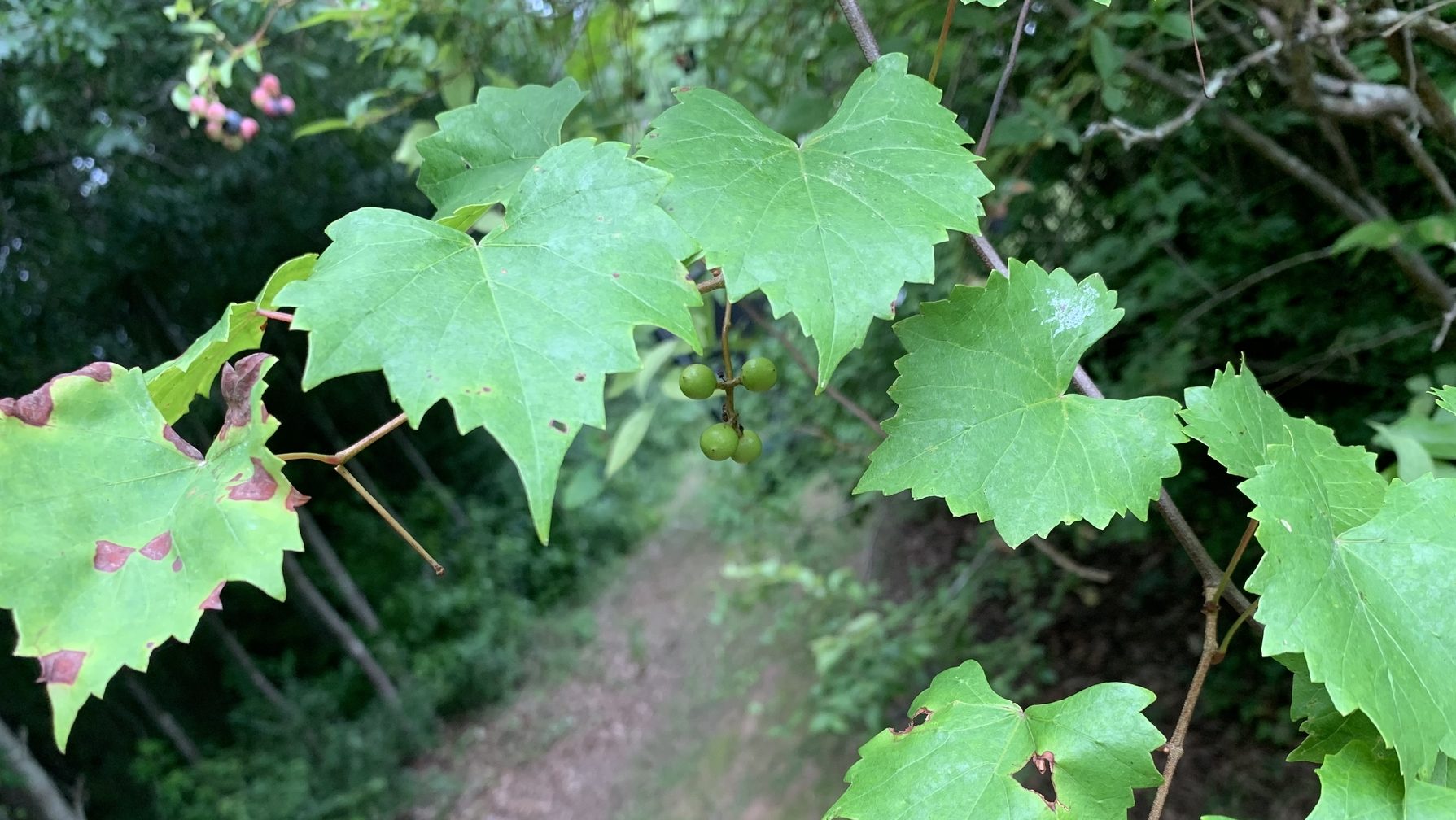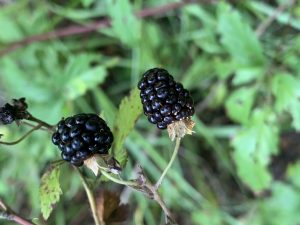
TUSCALOOSA, Ala. — Believe it or not, food isn’t only found on grocery store shelves and farms.
It’s all around, even in the average backyard.
In Alabama, there are numerous types of edible plants and fungi growing wild.
Dr. Michael R. McKain, assistant professor of biological sciences and curator of The University of Alabama Herbarium, said Alabama is one of the most biodiverse states in the nation, and with that comes a plethora of wild eats.
Historically, ancient people discovered what was edible by trial and stomach-churning error.
“Our knowledge of what we can eat is based on thousands of years of people doing just that,” McKain said. “When people were hungry, they tried different things and found out what was edible. People have been smart enough to know to try a little bit of something rather than a lot. There’s not a lot of things that can kill you straight up by taking a nibble, it just may make you really sick.”
Today, wild foraging is growing again in popularity. But with that come words of precaution. If anyone intends to engage in legal wild foraging, there are some rules to follow to keep safe.
“Never ever eat anything that you’re not 100 percent sure you know what it is,” McKain said. “One of the best ways to learn is to go out with people who know which plants are safe to eat.
“Also, be mindful and respectful of the property you’re on. Are you allowed to forage on that property?
McKain also cautions people to be mindful of where plants are growing. If it’s a location that gets sprayed a lot by pesticides or weed killers or is growing on the side of the road where car exhaust hits it, wild edibles in that area should be avoided.
Below is a list of wild items often consumed and one item McKain cautions against consuming:
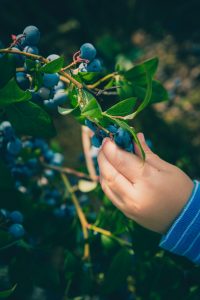
1. May berries/Huckleberries/Deer berries/Blueberries
“These are very common,” McKain said. “May berries, huckleberries, deer berries and blueberries are all names for species in the blueberry genus. People can go to the UA Arboretum and see them – not pick or eat them there – where they’re labeled. The blueberries are large and blue with a waxy coat, like you see in the grocery. Deer berries are smaller and dark purple, sometimes black. I think they taste better than blueberries. It’s a deep, complex flavor. In the South, huckleberries and may berries refer to some of the same species and are a bit smaller than blueberries and more purple.”
2. Dewberries/Blackberries
“These are basically weeds. You can find them growing all over the place. Dewberries and blackberries are two different groups of species in the same genus. I see dewberries commonly on campus, but they taste the same as blackberries. I cannot think of anything you’d misidentify them with that’s dangerous. Dewberries grow as trailing brambles while blackberries are upright or high-arching.”
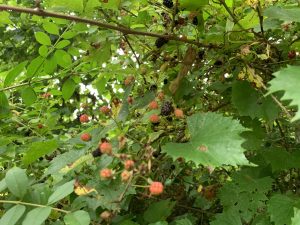
3. PawPaw
“Pawpaws are pretty awesome, one of my favorites. They’re a native tree, and the largest, native edible fruit in North America. They are also known as custard apples. They have a flavor like bananas, mango or pineapple. Very tropical tasting, but they are not related to any of these well-known fruits. Their closest relatives are tropical, but they are relatives of magnolia trees. Pawpaws were cultivated by Native Americans and eaten by early presidents like George Washington and Thomas Jefferson. They’re edible raw and can grow to be 35-foot tall trees. They flower in the spring with blood red flowers, and the fruit will come in the fall. They’re half a foot long and three inches wide.”
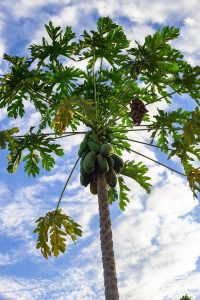
4. Dandelions
“You can eat dandelion greens. They’re pretty good for you. The big issue is that they’re sprayed because they’re weeds. You can make wine out of them or a tea. You can also buy them in some grocery stores, but you can find them all over the place. They’re very bitter. People sauté and blanch them. Prepare it like you would kale.”
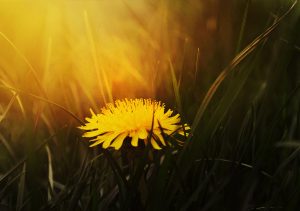
5. Pokeweed
“They’re poisonous. Some medicinal uses are known, but I wouldn’t recommend people eating pokeweed. Why take the chance? It has a red stem and can grow up to six feet tall. It will have white flowers that become dark purple berries in big clusters.”
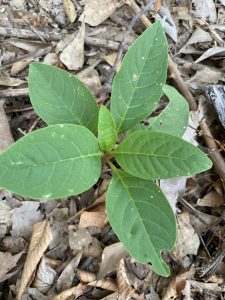
6. Wild/Mock Strawberries
“The strawberries you buy in the grocery store are a cross between our wild strawberries and one from the Pacific coast. If you have a weed in your yard, however, it’s probably a mock strawberry. They like shaded areas. Don’t eat those. The true wild strawberries taste like strawberries you have eaten from the store. The mock strawberries have yellow flowers while true wild strawberries have white flowers. Mock strawberries point up, but true wild strawberries hang.”
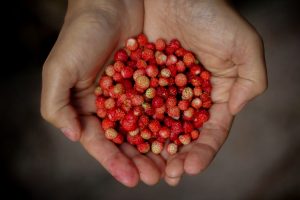
7. Wild Pecans/Hickory Nuts
“These two are in the same family. The ones we buy in grocery stores are grown in orchards, and they’re of mixed genotypes. There are about ten hickory species in Alabama, not including pecans. The nuts have an outer layer that will often leave an aromatic residue on your hands. The nut “meat” will look like a walnut. Be careful not to confuse these with buckeyes, which should not be eaten. Many members of this group are eaten. This family, which includes walnuts, grows on trees with large, aromatic leaves that are pinnately compound and alternate.
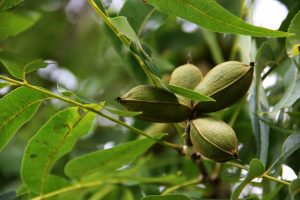
8. Acorns
“Acorns have to be processed to eat. They have a lot of tannins in them, named as they were used to tan leathers. Tannins are for protection and found in a lot of different plants. Acorns have to be leached in boiling water. The water will turn brown. The brown water is removed and replaced with fresh boiling water. This is repeated until the water is clear. After this, acorns are often roasted and can be used in various recipes.”
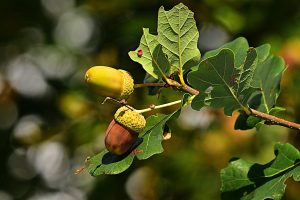
9. Muscadines
“They are in the grape family and grow everywhere. They’re almost weedy, growing on vines (or lianas – woody vines) that grow on trees. It’s pretty noticeable by its leaf shape – heart shaped – as they look like grape leaves. The berries off of them – grapes are berries – are bigger than the ones you buy at the grocery store. They have a lot of seeds in them. You can buy them in farmers’ markets or collect them yourself. They’re dark purple. You can eat them whole.”
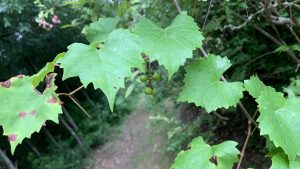
10. Morels
“Find someone who knows what they’re doing, and don’t take any chances with these. If you can find them, they’re delicious. They’re the best fried mushrooms you’re going to taste in your life. You can sometimes find ‘mushroom-hunting foraging groups,’ which will have folks that know what to look for. Always go with someone who knows what they’re doing. I wouldn’t try it by myself because you can get really sick if you eat the wrong mushroom. People may not tell you where their morel foraging spot is, as they are usually a closely guarded secret. They may just give you some, but morels can be found in wooded areas. The fungus is a network of cells that are like roots. They grow and digest/eat whatever they’re growing in. We eat their reproductive structures -mushrooms.”
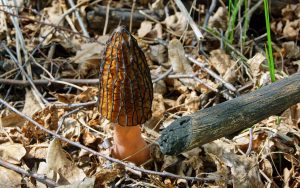
To discover every edible plant that grows in Alabama and how to identify them, find some Southeastern field guides. Or, talk to folks that actively forage.
“The rule is, if you are unsure, don’t eat it,” McKain said. “But if you want to really figure it out, find someone like me – a botanist – and email us photos asking what something is.”
Contact
Jamon Smith, UA communications, jamon.smith@ua.edu, 205-348-4956
Source
Dr. Michael McKain, mrmckain@uga.edu, 205-348-1826
